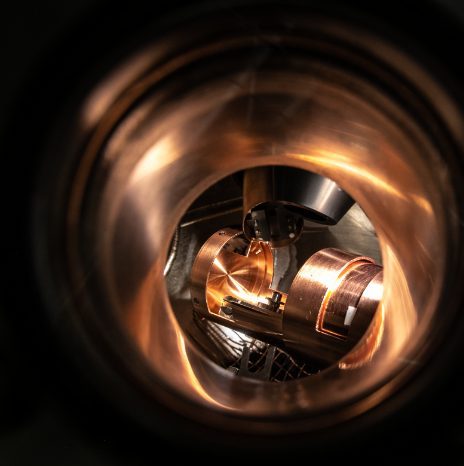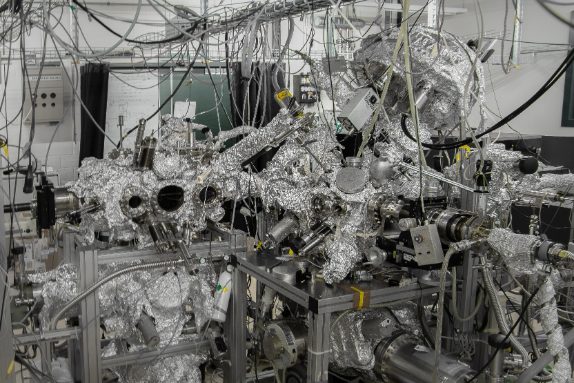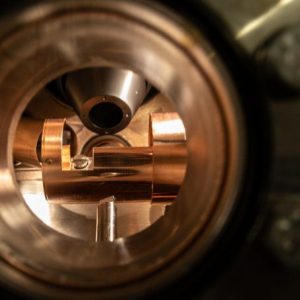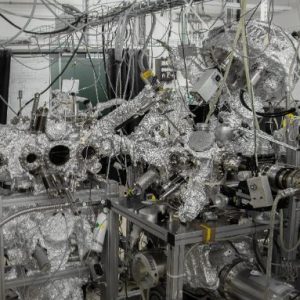The ASTRA end-station
Angle-resolved photoelectron spectroscopy or ARPES, is a key-technique for characterizing solids, and enables researchers to study the electronic band structure of single crystalline materials. Of particular relevance are electrons at the so-called Fermi surface, the most sensitive to external stimuli, which determine the electronic properties of materials interesting for their quantum properties and promising for future applications.
The Harmonium short pulses can be employed to perform ARPES with time-resolution (trARPES) where electrons are set in motion by a secondary light pulse, revealing fundamental interactions and meta-stable states not observable in equibrium conditions.
ARPES experiments are extremely demanding in terms of sample contamination, and require a dedicated ultra-high vacuum chamber, ASTRA (ARPES Spectrometer for Time-Resolved Applications) , developed by the LSE group and currently managed by LACUS personnel and the SOIS group. User acces is provided to EPFL and external users.
The Harmonium short pulses can be employed to perform ARPES with time-resolution (trARPES) where electrons are set in motion by a secondary light pulse, revealing fundamental interactions and meta-stable states not observable in equibrium conditions.
ARPES experiments are extremely demanding in terms of sample contamination, and require a dedicated ultra-high vacuum chamber, ASTRA (ARPES Spectrometer for Time-Resolved Applications) , developed by the LSE group and currently managed by LACUS personnel and the SOIS group. User acces is provided to EPFL and external users.

Photoemission main chamber of ASTRA, showing the motorized sample manipulator and the electron energy analyser entrance electronic lens.
Warning
Please note that the publication lists from Infoscience integrated into the EPFL website, lab or people pages are frozen following the launch of the new version of platform. The owners of these pages are invited to recreate their publication list from Infoscience. For any assistance, please consult the Infoscience help or contact support.




